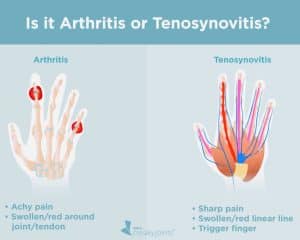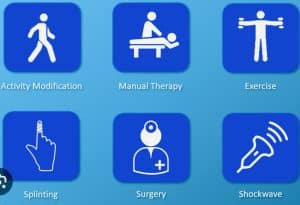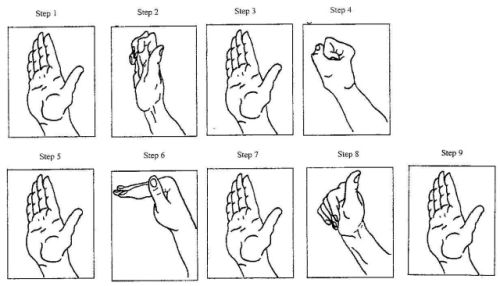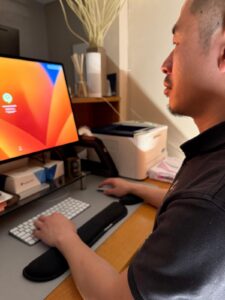By Sumaiya Farheen, June 2023.
What is Trigger Finger and How Does a Splint Help?

Trigger finger, also known as stenosing tenosynovitis, occurs when the flexor tendons in your fingers become inflamed or irritated, causing the tendon sheath to narrow or thicken. This impairs the smooth gliding motion of the tendons, leading to a catching sensation or even locking of the finger. Common in individuals aged 40 to 60, particularly women, this condition can cause pain, stiffness, and limited movement in the affected finger.
What Causes Trigger Finger?
While the exact cause of trigger finger remains unclear, several factors may increase the risk of developing this condition:
Repetitive Hand Movements: Tasks that involve gripping or grasping can strain the flexor tendons, especially with prolonged use.
Medical Conditions: Certain conditions like rheumatoid arthritis, diabetes, and hypothyroidism are associated with an increased risk.
Gender and Age: Trigger finger is more common in women and typically affects individuals between the ages of 40 and 60.
Dupuytren’s Contracture vs Trigger Finger

Trigger finger is often confused with Dupuytren’s contracture, but these conditions differ in both cause and symptoms. Trigger finger occurs when the tendons become irritated, whereas Dupuytren’s contracture involves the development of cords beneath the skin of the palm that restrict finger movement. If you’re experiencing pain or stiffness in your hand, it’s important to seek a professional diagnosis for appropriate treatment.
Dupuytren’s contracture, on the other hand, forms knots under the skin of the palm. These knots develop into cords that pull the fingers into a bent position, restricting movement.
Is trigger finger a form of arthritis?

In these cases, the inflammation associated with arthritis can affect the tendons and contribute to the development of trigger finger.
De Quervain’s Tenosynovitis

The location of pain differentiates between trigger finger and De Quervain’s tenosynovitis. Trigger finger affects the tendons in the hand, whereas de Quervain’s tenosynovitis causes pain or tenderness at the base of your thumb.
Treatment

Treatment options may vary depending on the severity of the condition. Here are some common approaches–
*Shockwave therapy– It has emerged as a promising treatment option for individuals suffering from trigger finger, a condition characterized by the painful locking of a finger joint. This non-invasive procedure involves the delivery of high-intensity sound waves to the affected area, stimulating the body’s natural healing response.
*Chiropractic- Chiropractors primarily focus on diagnosing and treating musculoskeletal conditions, including joint dysfunctions. While chiropractic care may offer some benefits in terms of pain management and improving joint function.
*Osteopathy- Osteopathic practitioners aim to improve overall health and well-being by focusing on the musculoskeletal system.
*Physiotherapy- also known as physical therapy, can play a role in the conservative management of trigger finger. Our Physiotherapists may use various techniques, such as exercises, stretches, manual therapy, and modalities like heat therapy, to alleviate pain, improve finger mobility, and restore normal hand function.
*Massage Therapy- Massage therapy involves manual manipulation of soft tissues to promote relaxation, relieve muscle tension, and enhance circulation.
*Rest and Splinting- Resting the affected hand and avoiding repetitive movements can provide relief. Wearing a splint to immobilize the finger can also promote healing.
*Hand Exercises – A physical or occupational therapist can prescribe gentle stretching and strengthening exercises. These exercises improve flexibility and range of motion in the affected finger.
Trigger Finger Exercises NHS

*Hand Therapy- Hand therapy involves various techniques, such as massage and exercises to improve the function of the affected finger. It can be helpful in combination with other treatments.
Prevention

While trigger finger cannot always be prevented, taking certain measures may help reduce the risk of its occurrence. These include-
*Taking Regular Breaks- If your work involves repetitive hand movements, make it a habit to take regular breaks to rest your hands and fingers.
*Modifying Hand Movements- When engaging in activities that strain the fingers, try to modify your technique or use tools that minimize stress on the tendons.
*Maintaining a Healthy Lifestyle- Managing underlying conditions like diabetes, arthritis, and hypothyroidism can lower the risk of developing trigger finger.
*Use Proper Tools and Techniques- When engaging in activities that involve repetitive hand movements, use tools and equipment that are designed to reduce strain. Additionally, learn and implement proper techniques to minimize stress on the tendons.
*Avoid Repetitive Gripping– Try to vary your hand movements and splint for trigger finger making sure to avoid prolonged repetitive gripping or grasping actions. If possible, use different fingers or alternate hands for tasks that involve gripping.

*Ergonomic Workstation- Ensure that your workstation is set up ergonomically. Use a supportive chair, maintain proper posture, and position your keyboard and mouse to minimize strain on your hands and fingers.
At Back To Health Wellness, we help you manage trigger finger symptoms by recommending the most suitable splints to stabilize the affected joints. We ensure the splints we offer are comfortable, promoting healing and reducing strain on the tendons. With our guidance, you’ll regain functionality in your hand and get back to your daily activities with minimal discomfort. Our goal is to support your recovery and help improve your hand’s mobility.

